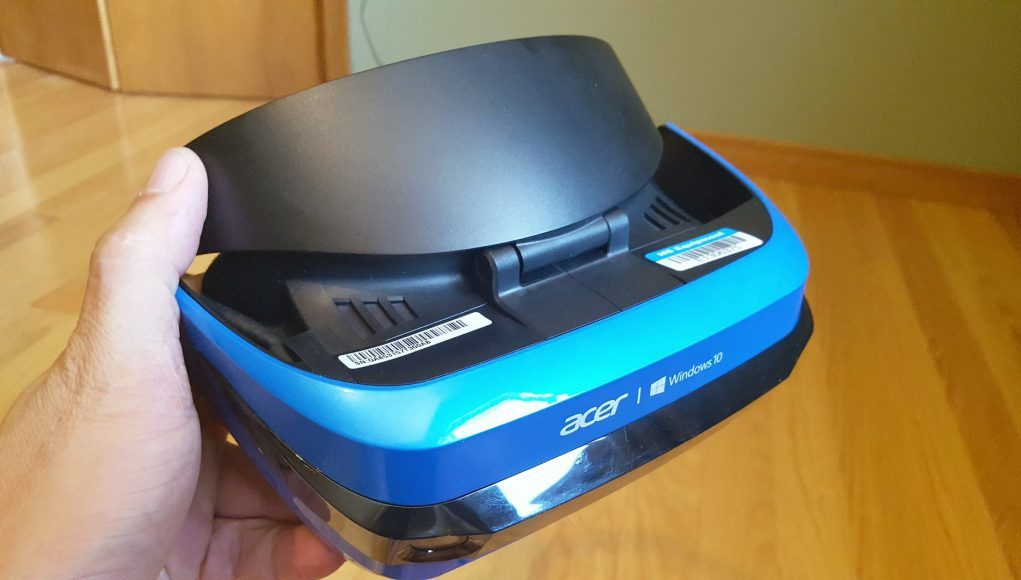Software developer Shachar “Vice” Weis has described his first impressions of Acer’s Windows Mixed Reality VR headset dev kit on his blog. His company, Packet39, makers of VR game Orbital Injection, recently received the Developer Edition headset made by Acer, which was due for an August delivery alongside a similar headset from HP.
As you might expect from a headset available for $300 (and aiming to maintain a similar price for the consumer version), the packaging is as basic as possible, and the developer unit comes with no accessories. The headsets will support motion controllers, but it appears these aren’t available for developers just yet.
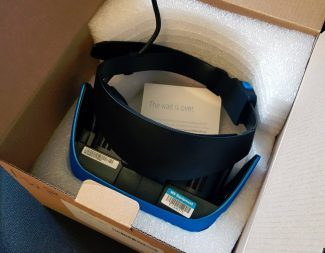
Weis calls out Microsoft’s rather confusing use of the term “Mixed Reality” for what is a fairly conventional VR headset, noting that it lacks any features that blend realities together (beyond the boundary-warning system). “It’s not a ‘Mixed Reality’ headset by any means I can think of”, he says. “It’s a VR headset, nothing more, nothing less. There is no real-world 3D overlay, optically or with the cameras”.
The most notable feature of Microsoft’s design is the ‘inside-out tracking’—which shares some of its technology with Microsoft HoloLens—requiring no external devices or sensors to achieve positional tracking. However, it doesn’t support the same spatial mapping as HoloLens, as indicated on Microsoft’s Dev Center page, instead using two front-mounted sensors purely for headset tracking.
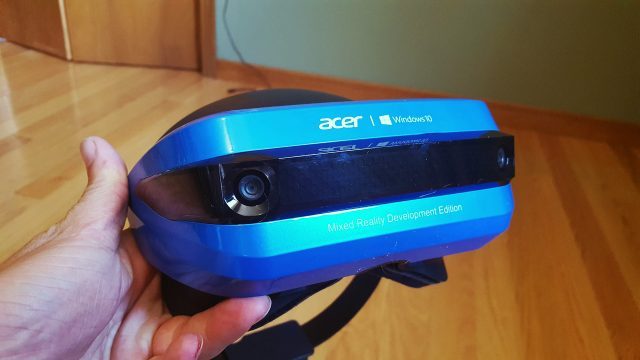
Weis’ impressions of the headset align closely with our hands-on from the Microsoft Build conference in May, describing a cheap-feeling but pleasantly light unit (although it appears to have gained a few grams at 380g), with a useful but “somewhat awkward” flip-up mechanism. The strap is made from rigid plastic with a basic locking rachet, that is “not very smooth or elegant, but gets the job done”. It is missing certain useful features like hardware IPD adjustment (seen on the the two other headsets already on the market), built-in mic or headphones (also on those headsets), but it does have an audio jack, and the convenience of detachable foam (velcro) and an IR proximity sensor inside to detect when the headset is being worn.
The straightforward hardware design extends to the setup, as it connects directly to a PC via USB 3.0 and HDMI, with no breakout box or additional power required, and Windows appears to automatically detect and install the drivers and software.
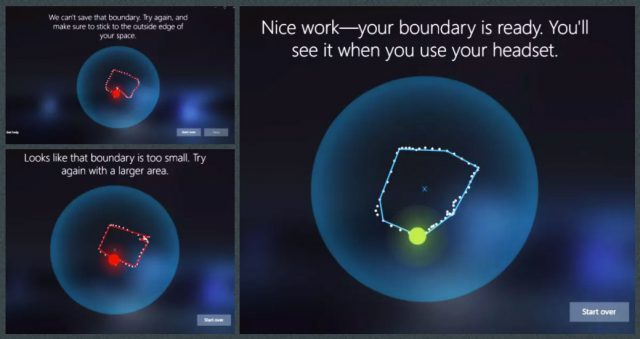
Weis had some problems with the initial setup within the ‘Mixed Reality Portal’ software, taking “several attempts” to map out the play space, which is done by walking around the perimeter, holding the headset at waist height. While the cable length is similar to the Rift, Microsoft’s setup procedure could have benefited from a more generous cable. “Even with the cable fully extended, the biggest area I could trace was too small”, he says. “I had to move the computer and try again”.
Current inside-out tracking quality is unable to match the precision of tracking systems like the Rift’s ‘Constellation’ and the Vive’s ‘Lighthouse’ technology, but Weis finds it works well enough.
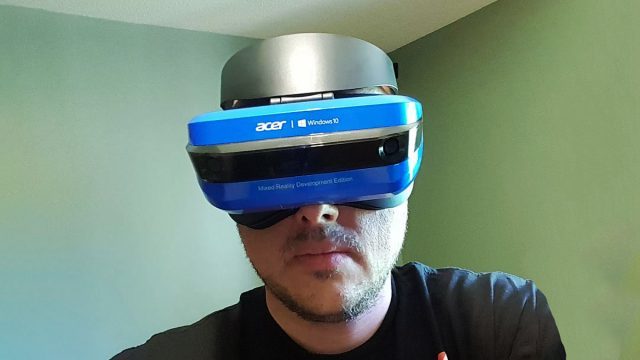
“It’s impressively good for an inside-out tracking system with no external sensors or transmitters”, he says. “The headset supports full room-scale, 6DOF tracking, with an occasional jitter / flicker when you move your head quickly. Again, the Vive / Rift is better, but this comes very close”.
The higher resolution displays (dual 1,440 x 1,440 vs. 1,080 x 1,200) result in a “sharper image” and “considerably less screen door effect”, than the Rift or Vive, but are let down by lower quality optics, as we also noted in our hands-on.
“The sweet spot is small and the edge smear is very pronounced”, says Weis, “you can clearly see a circular edge”. Our hands-on also described a lower field of view, and indeed the “95 degrees horizontal” per the Acer specifications is slightly lower than the Rift or Vive.
Weis describes the lenses as ‘hybrid’, although he seems to be using the term (which can refer to several things in optics) differently to Oculus, whose ‘hybrid’ lenses in the Rift refer to the asymmetrical shape combined with Fresnel rings. Acer’s Fresnel solution is likely more conventional than the Rift.
Without motion controllers for now, the UI is operated by voice or a mouse / keyboard interface that “looks cumbersome but it actually works.. OK (ish).” Weis recorded a couple of clips showing the boundary warning, which operates similarly to the ‘Chaperone’ ystem in SteamVR, and the basic interface of bringing up windows that can be positioned freely in space or align intelligently with the walls and other surfaces of the virtual environment.

